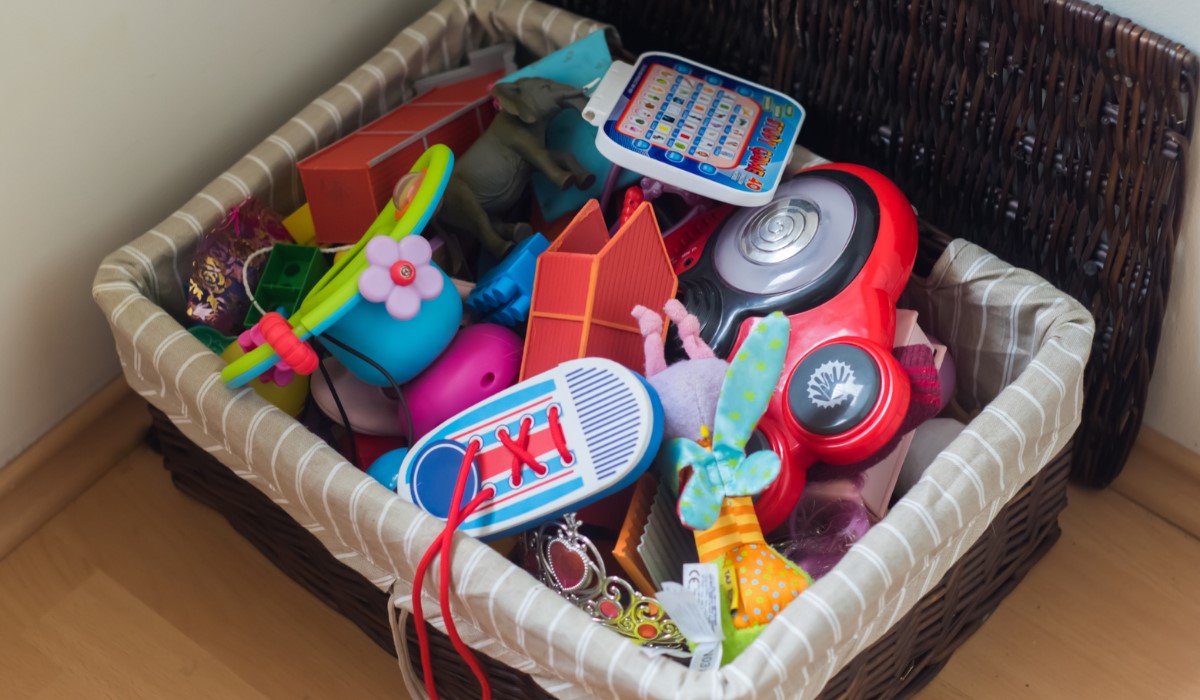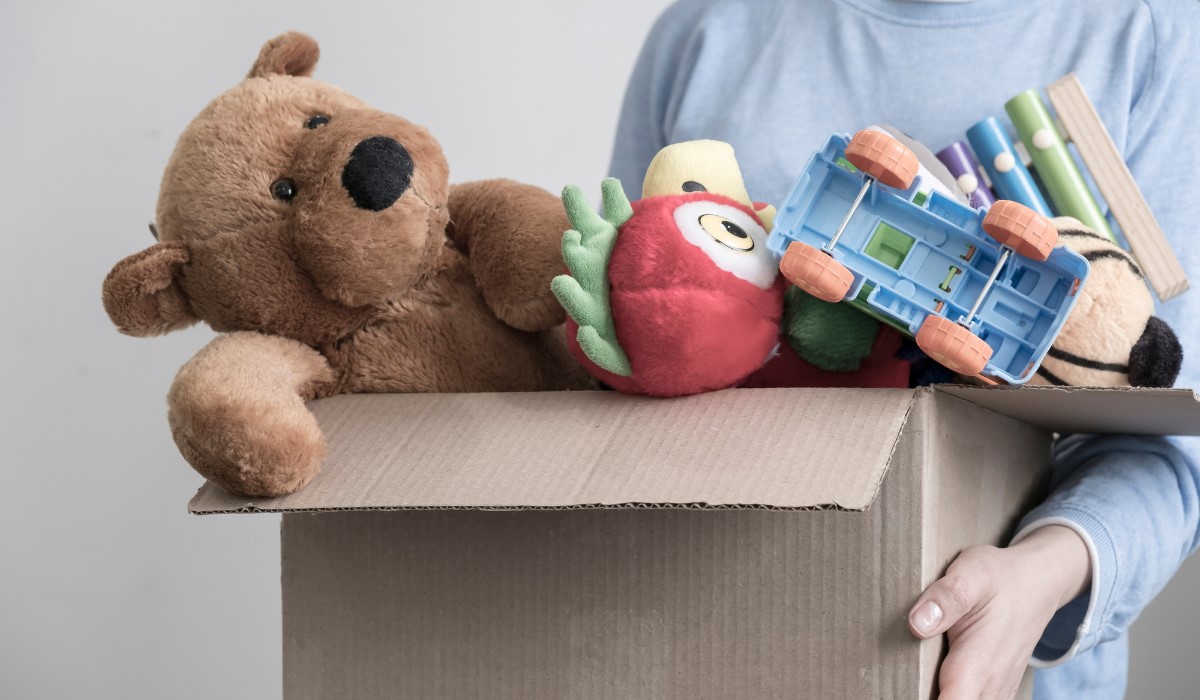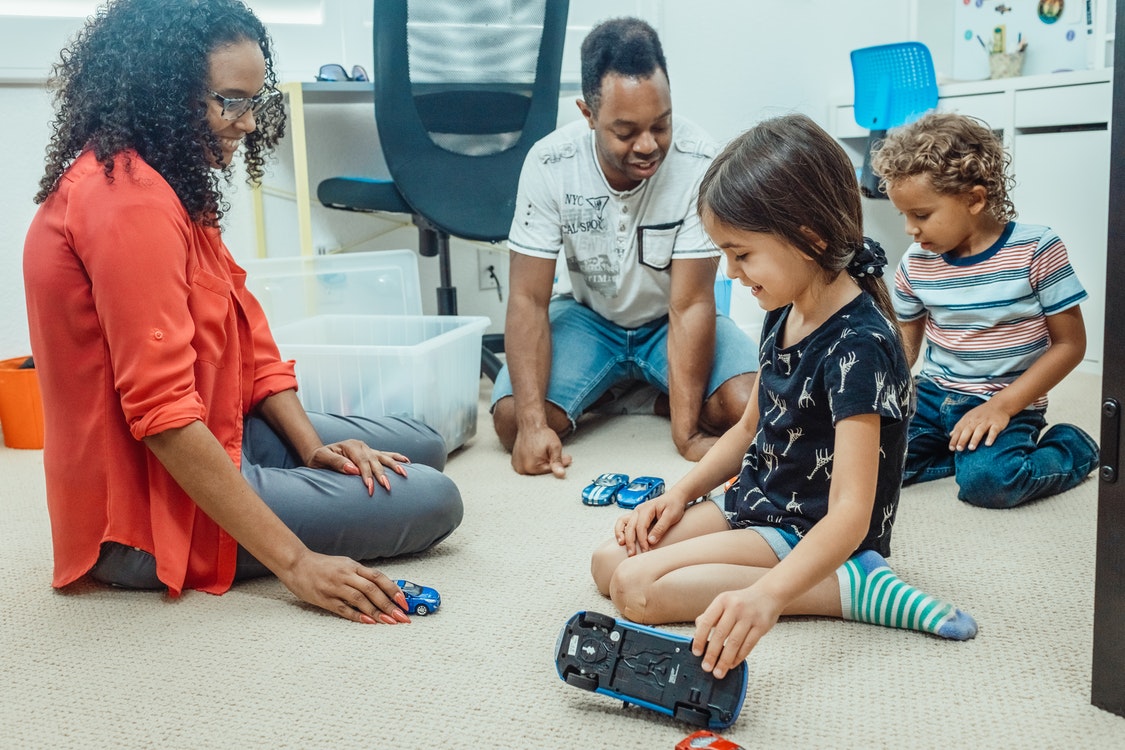It’s a common sight to see. Your child gets so many new toys for every birthday and every holiday until one day all the playthings seem to be overtaking your home. Rotating and limiting the number of toys your child has in one go is an easy way of combating the toy clutter while providing them with new opportunities for creative play.
By limiting the number of toys available, you avoid overwhelming or overstimulating your child with too many choices for play. It also encourages more meaningful, creative play with a few toys as opposed to jumping from one game to another every few minutes. By only setting out a set number of toys at a time, toys have a bigger chance of being used and played with.
How To Start a Toy Rotation?

-
Gather
Gather all your toys into one space. You might want to wait until your kids are at school or asleep for the night before starting to avoid getting distracted by your child wanting to play while you sort.
-
Sort Out
Sort out which toys into piles to keep and piles to toss. Get rid of the toys your child has outgrown and toys with missing or broken pieces that are no longer played with. If you find things that are still in reasonably good condition, find places that accept toy donations or give them away to friends who you know could use them.
-
Categorize
Once you’ve decided which toys to keep, categorize the remaining toys into 4 categories.
- Moving toys that target gross motor development such as sports toys, riding toys, climbing, and balancing toys.
- Thinking toys that encourage cognitive thinking and problem-solving. These toys often involve problem-solving skills and math and language learning. Think building blocks, puzzles, books, and board games. blocks, puzzles, books and board games.
- Creating toys such as art and craft supplies, musical instruments, DIY kits, and coloring books.
- Pretending toys that engage children in social and emotional play as they act out made-up scenarios with their toys. Stuffed animals, dolls, figurines, miniature vehicles, dress-up accessories, and house sets all belong in this category.
-
Sort Out Again
Once you have everything categorized, it’s time to weed through the toys again. If you find that you have too many of the same kind of toys, have your child pick some to give away. Assure them that they’ll still have plenty and that they can give their toys to another child who maybe doesn’t have as much as they do.
-
Curate Rotation Boxes
Choose between 2-5 toys of each category to include in each rotation. Use large lidded bins or boxes to store toys that are out of rotation. Keep toys that are in the current rotation where your child can easily see and reach and keep out of rotation toy boxes in an area out of your child’s sight. Each rotation box should ideally have 10-15 toys.
-
Figure Out Your Rotation Schedule
To rotate toys, collect all the toys in the current rotation, put them away, and replace them with the next rotation of toys. You can switch out your boxes every 2 weeks, once a week, once a month, or even every day.
It helps if you can show your child the rotation schedule, perhaps by hanging a calendar on their wall. That way, they’ll know what’s coming and won’t come to you looking for toys that are out of rotation. You can also set a reminder for yourself so you don’t forget to rotate the toys.
If you don’t want to stick to a schedule, that’s fine too. Simply switch out the boxes whenever your child seems bored with the current selection or asks for new toys.
Toy Rotation Tips

-
Get Your Kids Involved in the Process
Tell your child what the plan with the toys is and why you are doing so. Your child is likely going to wonder where their lego bricks and kitchen set went if you just start pulling toys out of rotation without letting them know beforehand.
Try this approach. “I know how important your toys are to you, but having so many things scattered all around over the house all the time stresses me out. It’s also hard to clean up so many toys after playtime, don’t you think? Why don’t we try sorting your toys into some new boxes, and we can switch out which box you play with every few days?”
Once you’ve set up the toy rotation, you can let your child pick out which toys they want to have out by having them “shop” for a set number of toys to play within each rotation.
-
Create Seasonal Rotation Boxes
For seasonal toys like beach toys and pool floaties or jack o’ lantern carving kits and Halloween masks, create seasonal toy rotation boxes that you can bring out when the appropriate season or holiday rolls around.
-
Start Early
It’s never too early to start rotating your child’s toys. Toy rotation works best for children ages 1-5, although you can start earlier and keep it up until your child is a bit older.
Starting toy rotation while your child is still a toddler may also help them adjust to the routine swapping of toys better than with an older child. It might also make the initial setup easier for you as younger children haven’t had as much time to accumulate piles of toys as older kids have.
-
Make Exceptions for Favorite Toys
If your child has a particular toy you think they will miss while out of rotation, it’s alright to leave it out for them every day. The goal of toy rotation is to keep them interested in their toys, so if your child happily plays with a certain toy or sleeps with a certain stuffed animal, feel free to leave it out of the rotation boxes.
Similarly, if your child asks to keep a certain toy from the current rotation or wants to keep a certain box of toys in rotation for a while longer, it’s alright. As long as the toys are still keeping your child engaged, there’s no harm in keeping some toys out longer than others.
-
Create Quiet Play Boxes
Keep a toy rotation box with all quiet activities that they can play with alone such as puzzles, coloring books, reusable sticker pads, and books if they’re old enough to read silently for days where you have need some peace and quiet.
-
Make Room for New Things

If a birthday or any holiday where your child is bound to get gifts and new toys is coming up, have your child weed through their old toys for anything they can part with.
Children aren’t very well known for their ability to let go. It might help if you explain to your child that they need to make room for new toys they will be getting for x holiday, or that the toy they don’t play with much anymore could make another child very happy.
-
Keep With a Theme
If you put a Buzz Lightyear figure in one box, your child might ask to play with Woody and Jess as well. Save yourself from the tantrums and the trouble of rooting through the other rotation boxes looking for the figures by putting toys with the same theme or characters together in one box.
-
Swap Toys With Someone Else
If you have a friend with similarly aged children, pick a few toys from your collection, send it off, and get a box of “new” toys back. Your child will for sure enjoy exploring their “new” collection of toys. Take note of which toys you send off so you can get them all back.
You can also try a toy swap subscription service. A toy swap subscription will send you a number of toys at set intervals, and you can send them back the next time you get a new set. Most services will also allow you to buy any toys that become playtime favorites.
-
Be Patient
Most children will take to the toy rotation scheme right off the bat, but don’t worry if your child isn’t as on board as you are on the whole toy rotation idea at first.
If your child seems anxious about the idea of swapping out toys, try dividing all the toys into 2 sets first before splitting them further and further until there are only 10-15 toys in each rotation.
Involving them in the process of sorting, categorizing, and creation of rotation boxes will help them understand where their toys have gone and that they won’t be playing with certain toys for a while.